Each flower descendant is striving for continuous improvement and a variety of His Garden. To decorate a garden area or a floral flowerbed with an unusual high plant - you should plan the embossed.
This long-term decorative culture looks spectacular in any landscape composition. And considering the unpretentiousness and endurance of the plant, for its landing, special knowledge or skills will not need. In order for the flower for a long time to please the views of others, it suffices to comply with the minimum agrotechnical rules of cultivation.
About how to choose the right grade for landing, what to choose a seedling to quickly fit, and what the main rules for landing and care for the preoccupnik, - detailed in the article. A selection of photos and a video lesson will be a clearly informative addition to the material read.
Poskonnik, description of the plant
Poskonnik - a long-term herbaceous semi-student of the Astrovy family, widespread throughout Europe, Asia, South Africa and America. Although, in nature, an annual representatives of the herbal form of the preoccupus take place. In nature, the Grass of Poskonika is more commonly found near water bodies, rivers or wetlands.
Culture awakens late, in the late spring, when warm weather is finally installed, but it quickly creates the missed, actively increasing the deciduous mass.
As the ancient legend says, the genus embossed or Eupatorium is named after the Pontic Tsar Evpator, who used this plant as an effective antidote. In Russia, the word "Nice" called the male cannabis plant, outwardly very similar to the preoccupus. Therefore, even in our time, often a perennial is so referred to as "hemp prefaby".
Among the popular names and the nicknames, the most popular are the following: fog, shaposhnik, cunning, the nettle is deaf, the grass is royal, hemp, horse mane, a spike, repick, cannabis, the grass of the Koriicha, the cunnichnik, sheds, Kunigundov Grass and others.
Morphological features of the preoccupus
In most cases, the tall plant, the embossed, reaches a height to 2 m due to a direct, strong and practically no branched stem. Holds this large half-headed well-developed rhizome.
Soots, along the entire length, thickly seated with rather large foliage. The leaves, depending on the variety, can be with sweets and without, slightly oblong or elongated, with a toothed or solid edge, pubescent or smooth. With such a polymorphism of the signs, the foliage is painted into saturated green or purple shades, sometimes with lilac streants.
The main decoration of perennials is beautiful tender flowers that remain a long time. The coloring of the wrenches of the preoccupus, mostly white or cream, less often - purple, lite. The flowering period falls on average, in August-September months. And although the flowers collected in baskets are very small, but unusually fragrant and attractive. When massively, on the tops of the shoots, a variety of thick shields of inflorescences forming the volumetric caps are blooming, up to 30 cm in diameter, the plant looks very effectively and challenged.
Shortly after flowering, the embedded forms original fruits - crumb seeds, with small rough seeds.
Even, fighting, the preserves retains decorativeness to the most frosts due to, pinkish color, stem and, densely planted, juicy green leaves. And the switched, silver tones, the inflorescences will be able to please the drywalk surrounding in winter bouquets.
The prevail is not too common, in our region, culture, deserves more attention from flowerflowers.
Acquisition of preoccupus
You can buy preoccupus in specialized garden shops.
If the plant is purchased as part of the root, it is necessary to make sure there is no mold, rot, and other mechanical damage. In the spring, the swollen kidneys are visible on the rhizome. The soldionable root should be solid and elastic to the touch and, as a rule, packed in a package or polyethylene.
If the embossed is bought by a sediment in a pot, it is important to pay attention to the external state of the seedling. The leaves of the plant should not be omitted, sluggish or soft, and the rhizome "get out" from the pot. In order for seedlings to take root, the roots must be completely covered, slightly moistened, lounge.
Views of Poskonience
Possessing high polymorphism, the genus of the preoccupus has, respectively, a lot of varieties. There are about 600 species of this plant. Of these, the most popular, including in our region, is considered a purpure.
Purple Cracker
- Loved by gardeners appearance preoccupus, outwardly resembles a blooming young lilac bush. An adult perennial reaches a height of up to 1.5 m. The plant is compact, which does not require additional garter.
- Bright green bright purple leaves are distinguished by a lanceal pointed shape. Slightly pubescent leaves, cover a bluish-green stem over all its length: from the root to inflorescence.
- The color of the gloves inflorescence corresponds to the title of the species, is pale pink or purple. Duration of flowering - more than a month (from July to August).
- It is appreciated for an attractive decorative look throughout the season: from spring and to winter. Moreover, the perennial is not afraid of frosts at all, differing high frost resistance.
- The famous "Little Red" grade is growing no more than 1 m in height, forming slender and neat bushes with lush and bright, burgundy inflorescences. The Little Joe variety is also characterized by small compact sizes and thick inflorescences of small pink flowers.
Spotstock
This species of the preoccupied is distinguished by large sizes (height to 1.8 m) and a somewhat rude shape. Often, the stalks are not evenly painted, with noticeable pink spots, which is displayed in the title of the species. Powerful reprehension stems are thickly covered with dark green or nasia foliage. The shape of sheet plates - oval, with a pointed edge. Inflorescences are large and loose, different shades.
The most common varieties of preoccupus:
- Posonnik Atropurpureum it is characterized by bright pink inflorescences and high (up to 2 m) stem, saturated red.
- Posonnik Riesenschirm It is highlighted in dark, black, stems (up to 1.8 m), on top of which huge pink inflorescences bloom.
- Posonnik Gateway.it is a slim bustard growing not more than 1.5 m in height, topped with large purple inflorescences.
- Posonnik Album it grows in a height of up to 2 m, blooming gray with white inflorescences.
- Posonnik Bartered Bride. - One of the highest perennial species, reaches 2.4 m in height, has snow-white flower.
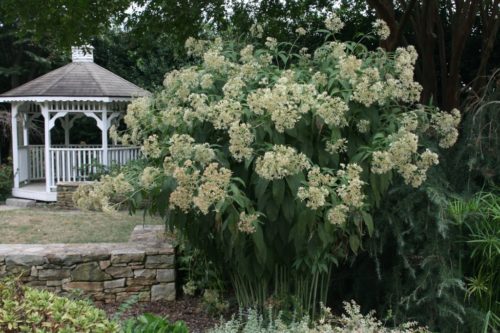
- Posonnik Glutballit is characterized by the presence of large, wine-colored, inflorescences. The height of the variety rarely exceeds 1.5-1.7 m.
- Posonnik PURPLE BUSH. Surprises with reprehensive burgundy stems and gently pink flowers.
Embosseer wrinkled
The species is distinguished by an oval-ovoid form of leaves, with cloths around the edges. Dark green foliage has an opposition on the stem. The semi-staple grows up to 1.5 m in height, the shoots are painted into dark, brown tones. Flowers a long time: from the end of summer until the middle of autumn, white lush inflorescences.
The most famous varieties:
- Posonnik Braunlaub. Differs in brown coloring stems, buds and young leaflets.
- Posonnik Chocolate.a bronze-purple leaf is highlighted, against the background of which small snow-white flowers look very advantageously. The variety of frost-resistant, tall, needs an additional support.
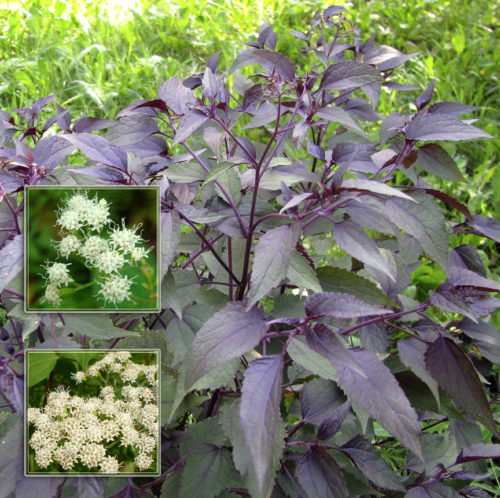
Embreck hemp
Compactit's relatively low (from 50- to 150 cm) view of the prevail, with direct and branched stem. In nature grows near reservoirs and rivers, in raw and wetlands. Rhizome thickened, with subtle processes. Falcupy leaves, short-sized, with cloths around the edge. Tight inflorescences bloom in the middle of summer silver pink baskets.
Popular in culture of variety:
- Posonnik Flore Plenait has large terry inflorescences dissolved in high (1.5 m), for a given variety, stems.
- Posonnik Variegata.it is characterized by bright pink inflorescences and green, with white border, leaves. Plant height varies from 50 to 75 cm.
- Posonnik Albumit has white colors and impressive (up to 2 m) height of the bush.
Methods of reproduction of Poskonnika
As with most plant crops, the basic types of reproduction are inherent: seed and vegetative.
Only a vegetative method of breeding is suitable for valuable cultural varieties, allowing to preserve all the varietal signs of an adult plant. In addition, some varieties of preoccupus are not at all forming seeds.
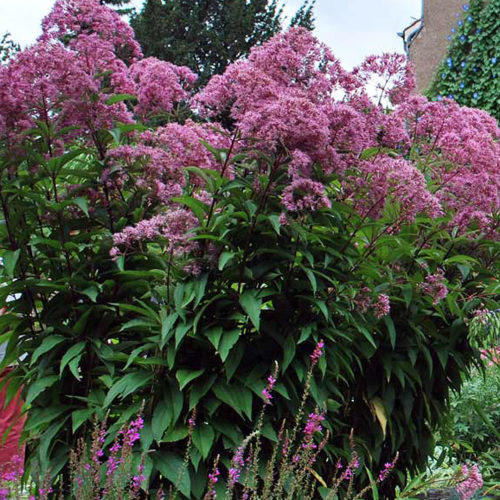
Seed reproduction of Poskonnika
It should be known that the reproduction of many years of preoccupation seeds suggests a rather long process. Culture will be able to please the blooming inflorescences only 2-3 years after sowing.
Vegetative reproduction of Poskonnika
This method of reproduction of the preoccupus provides several options: the division of the bush, the root shore and the shilling of green shoots.
- At the division of the bushuse a sharp and powerful toolkit (ax, shovel), because durable stems and thickened roots are not so easy to divide. We will need physical efforts and a small skill. Cutting a bush with a part of the root, it is important to make sure there are no less than 3 kidney renewal on each part. Conduct such manipulations with an adult healthy shrub, which is not less than 5 years old, often in spring or at the very beginning of autumn. In general, the embossed is undesirable to share and injure the holistic root system. If you do not adhere to this rule, the perennial will quickly weaken and dies. In addition, the older the preoccupus and the less subjected to the division, the more beautiful and it blooms longer.
One of the most simple and efficient methods of reproduction - shining.
- For root shuttle, in the spring, the shoots are harvested, about 10 cm long with a full-fledged small part of the plant root.
- Sensing with green shoots are carried out in spring and summer, cutting off suitable cuttings with a minimum of two interstices.
Landing Poskonnika
Choosing a place
- Hutting the embossed in the open ground, the optimal choice will be the open sunny placeAlthough the plant normally tolerates the half-day. Culture can grow in a shaded place, but it is unlikely to ever delight blossom.
- Unpretentious to the soil, the perennial will still be better developed on the lungs, loose, fertile sites. On the suction and clay types of soil, the culture significantly slows down their growth and vegetative development, since these soils poorly delay water. In the outerness of the soil composition, it is pre-enriched with compost, humid, wood ash or bone flour. The drainage layer is also prepared, the plot is drunk.
- Concerning humidity, Most wild-growing concomodes can be seen only near reservoirs, rivers and constantly wetted places. Cultural varieties of plants also differ in moisture. It is noted even the connection between the amount of moisture in the soil and the height of the plant: the greater the humidity, the higher the preoccupus. Therefore, when choosing a landing place, you should give preference to lowers, where moisture is more assembled or other places with a high water content.
Landing technology Poskonika
At all is not difficult to put the embossed on its site, it is enough to choose a place for the future "Giant Perennial" and decide on the type of landing (seeds, seedlings, rhizome).
Seeds of preoccupied can be purchased in specialized stores, collect independently or use self-sowing plants.
If the purchased seedlings are used, it is necessary to check that the seedlings were strong, not wondered, and the roots did not sprout into the hole of the pot.
For landing, you can also buy a part of the root of the plant with several, swelling to the spring, renewal kidney. Before buying, carefully consider the root to be solid, elastic, without rot or mechanical damage.
Seeds:
- As a rule, seeds are planted under seedlings in special containers or pots.
- After that, the seeds are sprinkled with soil, slightly seal, watered and covered with glass (you can use the film), creating a favorable greenhouse effect.
- It is possible in advance to landing, for days, to withstand seeds in the solution of manganese. During the germination of seeds, the glass is periodically removed to ventilate and humidifying the soil.
- Pots with seedlings are placed in a bright and warm place. After germination of seedlings before the phase of 4-5 leaves, the sprouts are pyric and seed into separate containers.
- Sowing is carried out in early spring, in order for the occurrence of established warm weather, the seedlings could be planted into open soil.
- Cold stratification of seeds conducted in advance (within a month), significantly increases the percentage of their gerbus.
- Sowing seeds are also practiced immediately into the open soil, in the fall, but the germination will be significantly lower.
- In any case, planting seeds will allow the plant to bloide only a few years later.
Saplings:
- The size of the pit for planting seedlings must correspond to the volume of the root mass of the plant, for their complete immersion in the soil.
- Placing into the ground seedlings of preoccupus, it is important to compact the soil after planting and richly pouring a young plant.
- The distance between the wells on average is 70-80 cm.
- After landing, the soil is better to climb sawdust, which will allow the maximum saving the soil moisture and prevent the appearance of weeds.
- Landing seedlings, as a rule, is carried out in spring. Autumn fit is somewhat problematic because of the late blossoms of the preoccupus, when landlocked seedlings before winter do not have time to root.
- A simple separation of a bush plant with rhizome into several parts is the easiest and not time-consuming way to plant a preoccupus. Separate parts, not cleaning from the land of the land, are placed in the prepared wells, the soil is sealing and watered with water.
- Sutting out carved roasting cuttings, they are placed in the soil, covered with a jar (plastic bottle) and leave for full rooting until next year. The rooted young seedling in the spring transplanted at a permanent place. It is important, in the first time after a transplantation, the plant's plant is slightly sharing and ensure moderate moisturizing.
- For breeding with green cuttings, first cut down the shoots with, at least 3 kidneys, remove the extra leaves at the bottom of the steel, and until half placed it into the ground, covered with a plastic bottle. Such greenhouse conditions contribute to the rooting of the cuttings. Moisturizing the landing site, leave seedlings until the next spring, when the transplant of the rooted plants for a new place will be needed.
Predian, plant care
Due to the fact that the embossed is an unpretentious and hardy plant, care for it will not be much labor. It is enough to adhere to general recommendations when growing a perennial to decorate your garden with a beautiful and unusually decorative bush. By the way, in one place the many years of grown up to 10 years.
Watering
Systematic and abundant irrigation is the best incentive for the development of preoccupus. This is exactly the case when "water does not happen much", especially in a hot or dry season.
Podcord
The application of fertilizers and feeding immediately is visually reflected in the state of the plant: there is a characteristic copper glitter, the color of the leaves becomes brighter and rich, the inflorescences of magnificent and richly, in the whole plant is a healthy gloss. Mineral fertilizers, humus, wood ashes, compost, nitroamofoski solution or urea are used as feeding. For the season, it is recommended to spend 3 major feedstocks: in early spring, in summer and before flowering.
Preparation for winter
For the winter, the shrubs stem cut off, leaving about 10-15 cm from the ground. Embossed - a frost-resistant plant and additional shelter does not require. The exception is only young and still weak seedlings, which are better to hide the sweetheart. In the spring, shoots grow very late, waiting for steady positive temperatures. Approximately in May, the culture is finally awakened and begins to actively grow.
Transfer
As noted above, the embossed does not like frequent division and transfers, while losing its unique decorativeness. Gardening plant replant the plant is recommended in the spring before the active growing season.
Trimming
With autumn pruning, before the onset of frost, they remove all the shoots of the preoccupus. In the spring, the perennial quickly creates "lost" and shoot together together. Gardeners recommend to cut forward them and leave only strong, elastic stems, thereby providing larger collections of inflorescences and abundant flowering. In addition, if the plant's self-sext is not desirable, faded inflorescences are also cut off.
The soil loosening
The presenter is beneficial to the loose, distorted soil.
Protection against pests and diseases
Resistant to diseases and pests, prevail practically does not ill. Occasionally, the plant damage miners forming thin moves in the leaves. To combat the parasite, only the mechanical removal of affected leaves is suitable. The preoccupist may be extremely rarely affected by meal dew, although such a disease is practically not typical.
Harvest and processing of raw materials
Given the therapeutic properties of individual parts of the plant, in early spring or late autumn they are collected and arid. In folk medicine, dried leaves, stems, flowers and even roots are used. Like all medicinal herbs, the raw materials are harvested in a dry, dark and ventilated room.
Garter
High perennial stems sometimes need a garter, especially after the rain, when the inflorescences of the weighted mass of the clone shoots down or with strong winds in the open area. To simplify this task, many flower growers are specifically planted with preoccupus along fences, walls or fences.
Application of precomple
In landscape design
Taking into account the tallness of culture, unpretentiousness in care and an attractive decorative appearance, gardeners actively use varieties of needle in the design of landscape design.
- The main rule of successful placement and favorable position in the garden for the preoccupus is to use the rear bed plans. In connection with their gigantic, as for a flower, sizes, designers are called the "architectural" plant and make up floral compositions, where it acts as a vertical dominant. It is planted as a separate vegetable element and in group landings. The preoccupus can safely use to cover the unsightly place on the plot, fall along the fence or near the reservoirs.
- Gardeners often use a multi-year semi-stabbed in a variety of combinations with other plants. Spectacular compositions are obtained with dolphiniums, various types of cereals, echinacea or an astyleba. The preoccupus is not an aggressive and non-overwhelming plant, so neighboring cultures feel quite comfortable in the company with him.
- Experienced flowers are recommended on the Poskonian plot to land early primroses: crocuses, snowdrops, scilla or hurry. Then, the plot will not be empty in the early spring, because the shoots of the preoccupus appear very late, only by May the month.
- Blooming vaults make the garden truly elegant and attractive, and thick fragrant inflorescences are actively attracting honeycomb insects. Particularly valuable is the quality of perennial during its active flowering, when most flowers in the garden already hungf.
- Flowers of the preoccupus are perfectly suitable for cutting; Soothes with lush inflorescences are long retaining freshness in water. And dry twigs serve as an excellent decorative material in the preparation of winter bouquets.
In folk medicine
The embossed is not only a magnificent decorative plant, but also a valuable medicinal material. Possessing a laxative, choleretic, anti-shine, cooler action, the embossed is actively used in folk medicine. In addition, the perennial is distinguished by the presence of bactericidal, wound healing and anti-inflammatory properties.
- The infusion of grass is used to treat diarrhea, gastritis, hepatitis, jaundice, malaria, decrease in blood pressure and reduce cholesterol content in the blood.
- Folk healers use champs of preoccupation with colds, bronchitis and pneumonia. Outwardly, apply binding and compresses with bruises, ulcers or other damage to the skin.
In any case, before using folk remedies, for the treatment of any diseases, you need to consult with your attending physician. Self-medication can harm health, and given the presence of poisonous alkaloids in the presence of poisonous alkaloids, it is necessary to apply it as a medicament with extreme caution.
So, the embossed is an outstanding decorative plant that requires a minimum of attention when growing in the garden. In return, the owner of this tall culture will receive a maximum of pleasure and pleasant impressions, admiring the giant flowering shrub. And the endurance and unpretentiousness of the preoccupus will greatly facilitate the process of planting and care for the perennial.

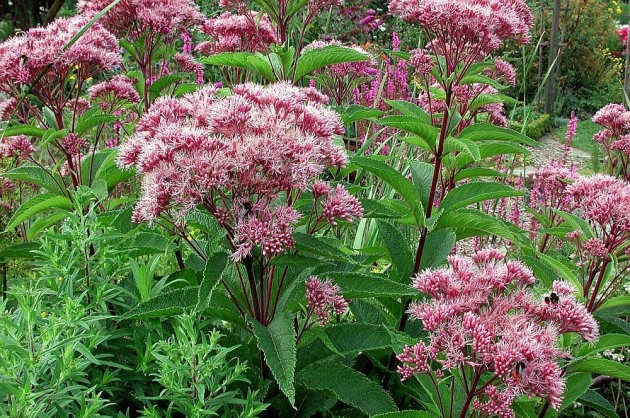
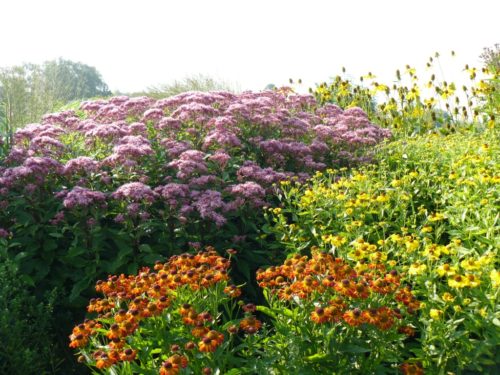
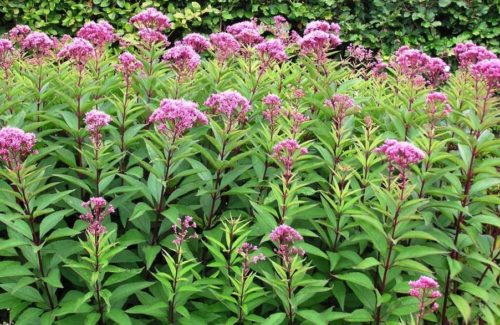
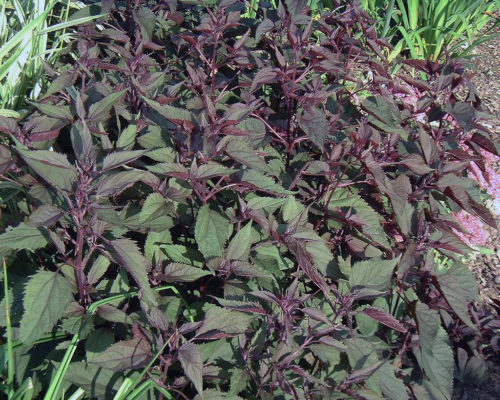
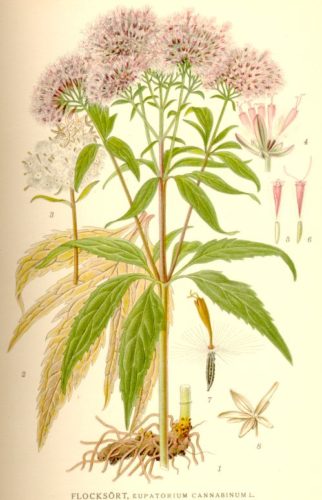
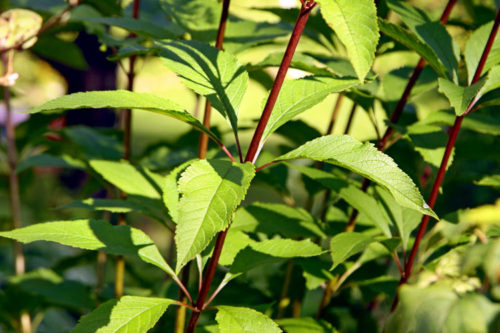
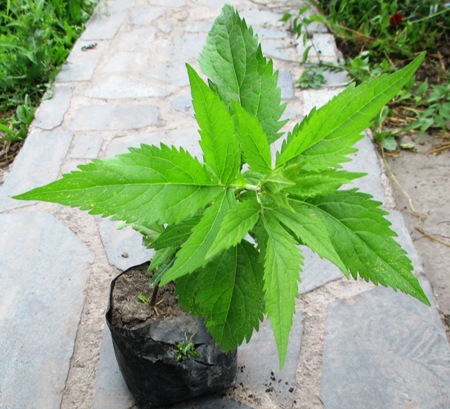

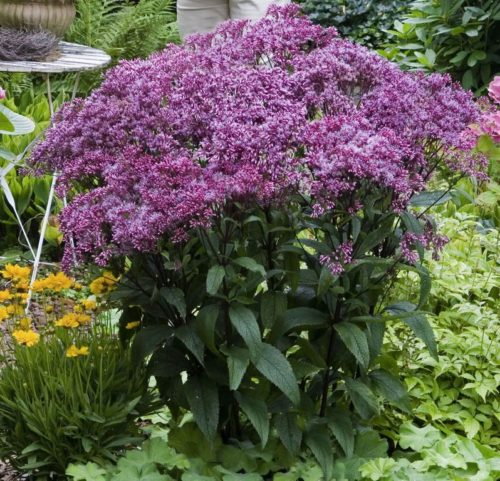
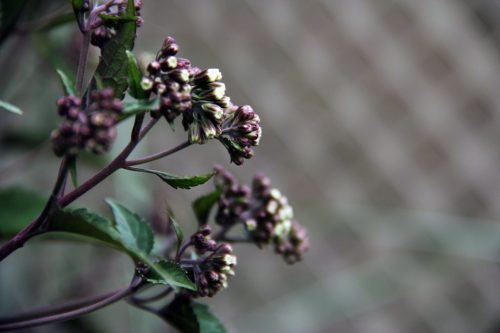
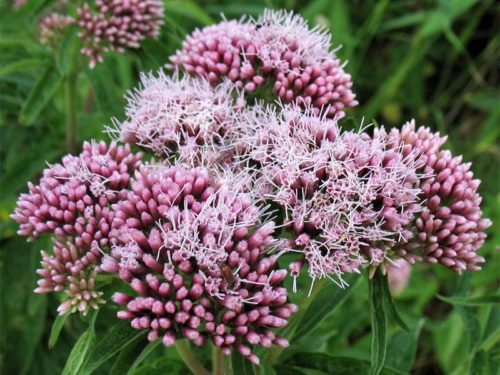
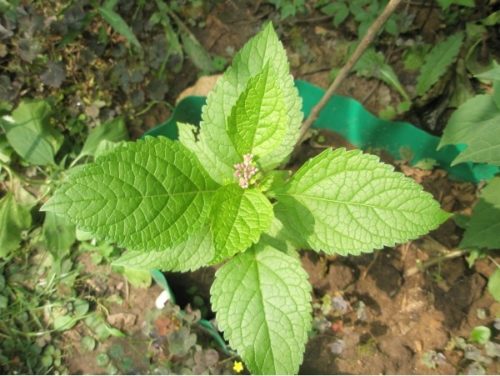
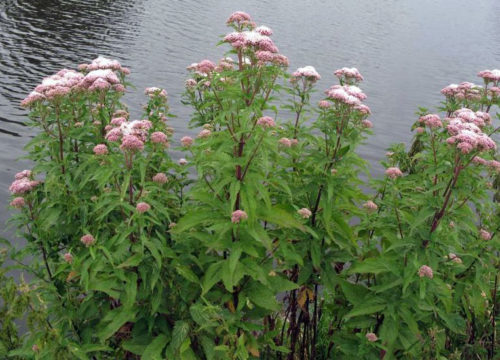
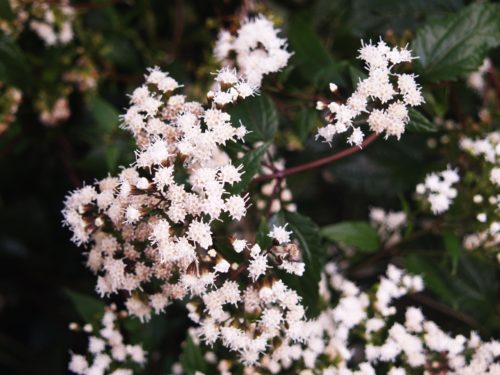
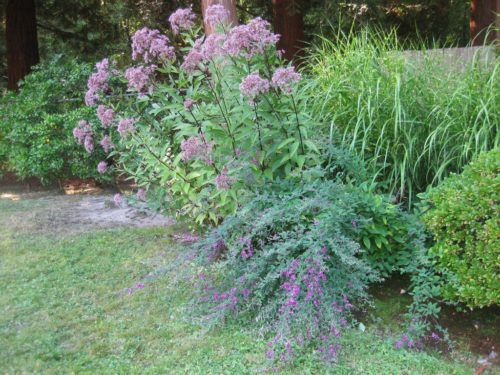
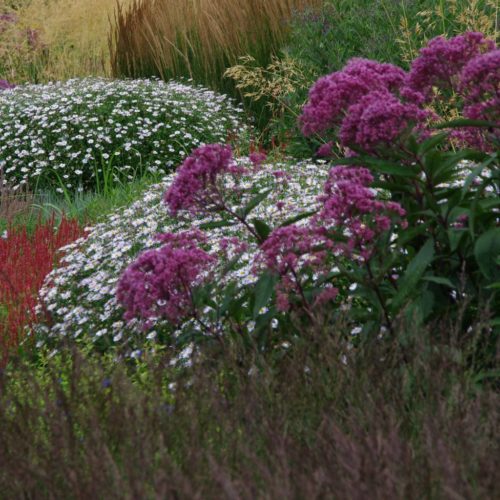
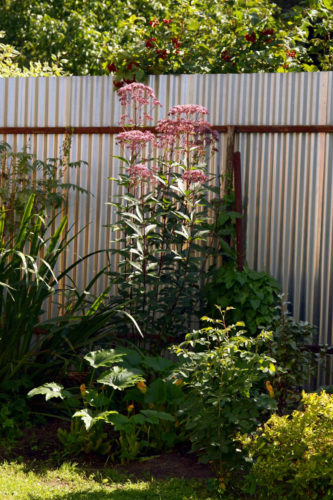
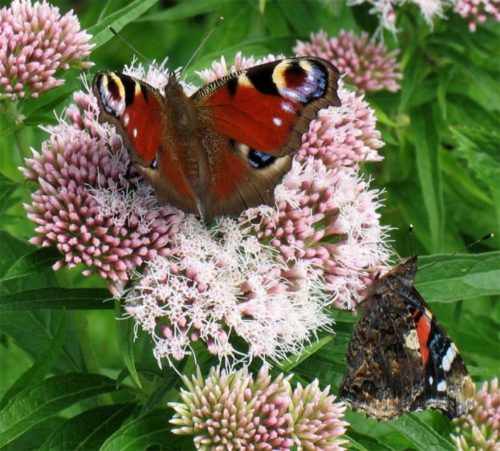

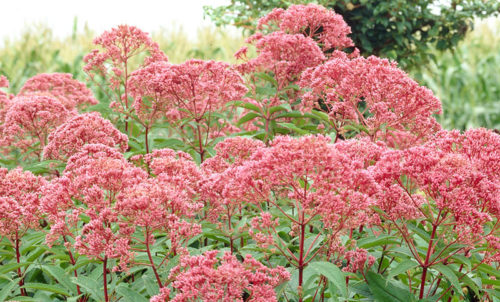


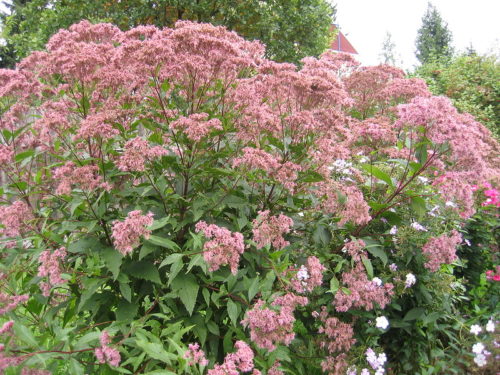
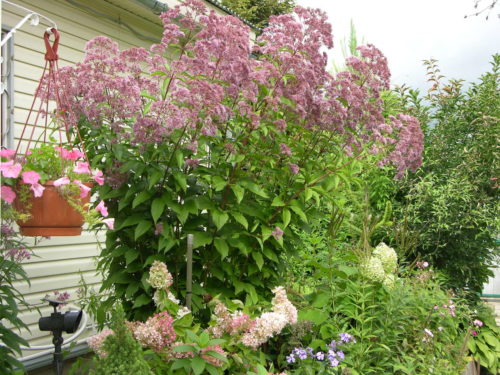
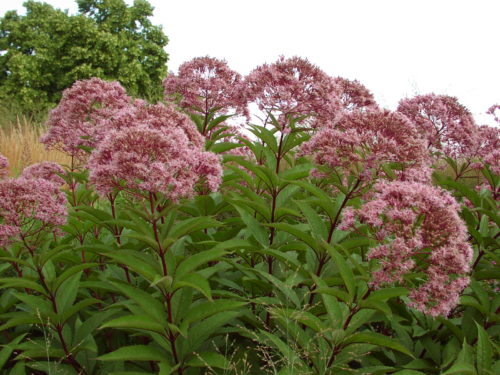


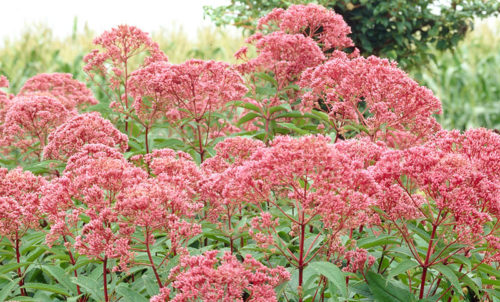
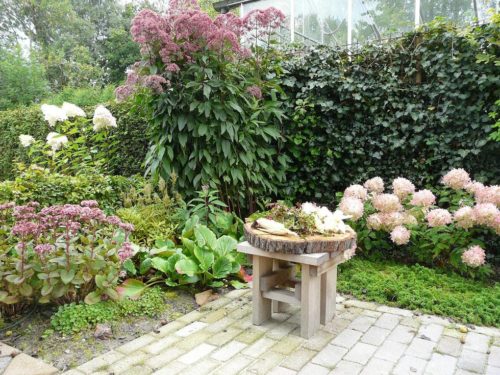












 Start a discussion ...
Start a discussion ...